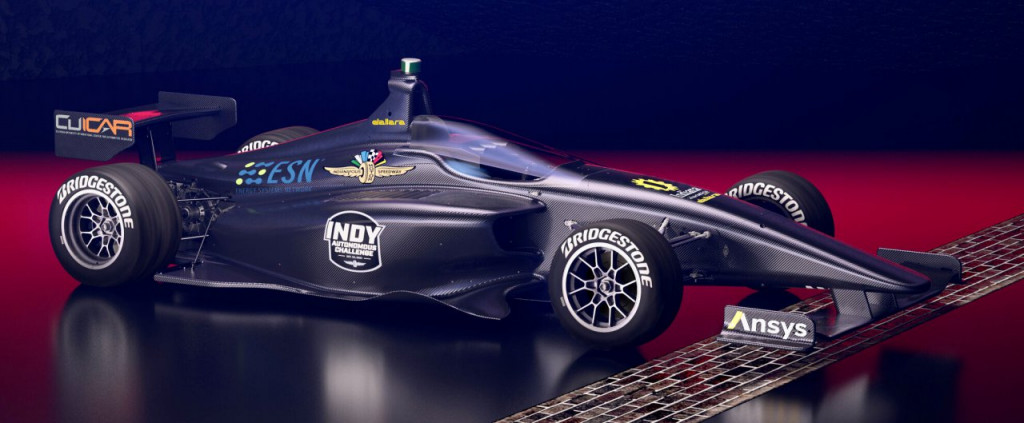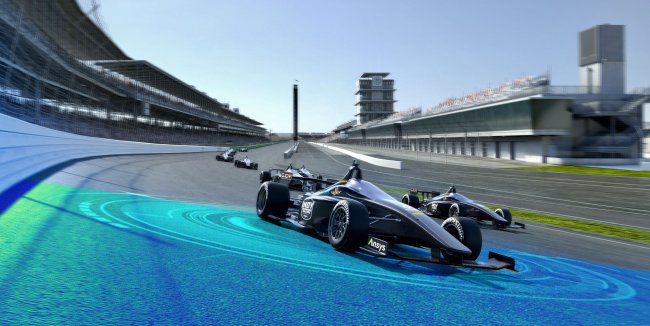It takes something very different to stick out in the Focus scene, but Geoff Longley has certainly managed it with his big power AWD Focus ST.
Feature taken from Fast Ford magazine. Words: Simon Holmes. Photos: AS Design
Many Ford fanatics will tell you that the Blue Oval becomes a lifelong addiction. Sure enough, the owner of this fine Focus, Geoff Longley, has been into Fords for over 20 years, which is why his current project is something particularly special and unique, which is hard to do in the Ford scene. With mean looks and a track-ready interior, his ST packs around 500bhp and, most importantly, a custom all-wheel-drive conversion.
The story starts for Geoff many years ago, as he got into his Fords early on.

“It all goes back to when I was growing up,” he recalls. “Going to the Chelsea, Brighton and Southend cruises it was always Fords that looked and sounded the best back then. Ever since I’ve just loved them and I’ve had a Mk2 Escort, Fiesta XR2 and Escort RS Turbo. Although it took me a long time to get back into motors, once I had the money, it had to be Ford and, in my eyes, the ST and RS models are the best hot hatches on the road.”
Sure enough, having become bored of a string of BMWs and Mercedes models, Geoff decided he wanted to go back to his roots with a fast Ford. He bought this example back in 2013, sourced from the local Volvo dealers in Milton Keynes. It seemed the ideal candidate for the job, being a ‘one-owner-from-new’ car that was completely standard.

However, it didn’t stay that way for long, even though there was no specific plan in mind, as he explains to us.
“I hadn’t modified a car in years, so I just did the simple bits first; an intercooler, induction kit and exhaust,” he confirms. “They were just a few mods that I could do myself. But that changed when I went to Jamsport for a block mod, uprated clutch and remap.”
From there, things quickly began to escalate for the ST as Geoff found himself wanting more and more power from the car, as the familiar-sounding story goes. After getting to a decent 320bhp, it was decided to take it up a few notches and the car was booked in for a full-on Jamsport 500bhp conversion, featuring forged internals, a big turbo kit, EMU standalone ECU, Anembo inlet and plenty more.

This did of course keep the power-hungry Geoff content, as a 500bhp car would for most people. But the huge increase in performance soon revealed that other areas needed upgrading to cope and it was clear a radical solution would be needed.
“Once it was 500bhp I was snapping driveshafts daily,” remembers Geoff. “So two weeks after it came back from the big power conversion, I brought it back to Jamie at Jamsport and we sat and talked about what we could do to resolve the issue.”
A number of solutions were considered to cure the car’s appetite for driveshafts, the most obvious being an RS front end suspension and drivetrain set up, which uses much stronger items that are a relatively easy swap. However, not wanting to follow trends Geoff was also happy to think outside of the box and be a bit different.

“The RS front end conversion had been done before, so I said what about four-wheel-drive?” tells Geoff. “Jamie replied he had always wanted to do it, so that was that and off we went.”
Of course, the all-wheel-drive conversion had not been done before because it’s not easy or straightforward to do, which Ben Hayes at Jamsport was happy to confirm. Understandably, he also explained that they weren’t too willing to give up the trade secret details learnt from the car’s development.

“We will say it was a very time-consuming project,” he reveals. “There are bits used from lots of cars and the conversion required a lot of custom work, although very little was done to the shell itself and some parts bolted straight up still.”
What we can determine is the car is using some Ford Kuga parts, a Haldex rear differential and modified subframes, but whilst the fabrication and hardware was one part of the challenge, the other was integrating the electronics. For this, a second EMU ECU was employed just to control the amount of load going to the rear differential, although this cannot be altered on the fly. Ben also confirmed it’s not a conversion that Jamsport will be offering in future. “It’s simply not cost effective,” he stated.
From Geoff’s perspective as a customer, the conversion itself wasn’t quite so difficult but getting it all to work and look like it came straight out of a factory was.

“That was the one thing Jamie insisted on; that it was to look how it should have been built from Ford and not just loads of extra parts bolted on to make it work. But if anyone could do it, and do it properly, it would be Jamsport,” Geoff tells.
The conversion not only looks factory-fresh, it also cured the car’s driveshaft issue and transformed the way it drives and put its power down.
“It’s a completely different car. It scares the hell out of me!” admits Geoff. “One of the biggest problems before was pulling away at a junction. You would have to pull away gently until you were moving, only then you could put the power down,”

But that’s not the case anymore, as Geoff continues. “You put your foot down and you’re off; it’s insane, the traction pulling away is just instant. The cornering is also like being in a go-kart now and you can dive into corners and pull out of them with so much confidence.”
The handling has been massively helped by the use of coilovers and fully adjustable suspension arms both front and back, which allow the car to be dialled in perfectly for track or road. With the huge jump in performance and the ability to actually use it, Geoff has been careful to ensure the subtle exterior mods don’t give the game away too much, although the car’s styling has also enjoyed a development process.
“It’s changed along the way,” he confirms. “It started off looking a bit ‘Mad Max’, with crazy bonnet vents and a big spoiler and I was going to go down the wide arch route, but once it went to Danny at A5 Autobodys, we talked it over and just went for a clean sleeper look with a few hints of meanness.”

That look comes from a mix of custom bumpers, RS additions and finished in a full respray. On the inside, it’s strictly business with a stripped-down interior that houses just a pair of bucket seats, harnesses and a welded-in roll cage, although there are a host of tasty smaller additions such as the gauges and trim.
With a unique running gear and big power under the bonnet to back it up, together with track-ready suspension, a tasteful interior, and subtle exterior modifications, this must be one of the most potent Focus STs in the country, so what’s next for the car?
“I’m not sure exactly,” admits Geoff. “I don’t want more power, as it’s got plenty and there’s so much more Jamsport can do with the ECU and the rear diff. There is talk of a sequential gearbox maybe and I’d like to lose a bit of weight off the car. I’ve not tracked it yet as I’m still getting used to it, plus I’m so busy with my studio and tattoo convention it’s hard to find time. But I’ll have it on track at Ford Fair and for now, I’m happy enjoying it and showing it off.”
With the perfect weapon for the job, we hope to see much more of Geoff’s AWD Focus ST. Be careful not to miss it…

Tech Spec: AWD Focus ST
Engine:
2.5-litre Duratec five cylinder, Wiseco forged pistons, K1 steel rods, Jamsport tubular manifold, Turbo Technics T4 turbo, TiAL external wastegate, Jamsport race-spec intercooler and big boost pipe kit, Airtec Stage 2 CAIS, Anembo inlet plenum and 70mm throttle body, Bosch 1000cc injectors, Jamsport external fuel system, EMU standalone ECU, Jamsport race oil breather and oil cooler kit
Power:
500bhp (est)
Transmission:
Jamsport custom AWD conversion, Haldex rear differential, Helix paddle clutch, Anembo quick shift kit
Suspension:
BC Racing coilovers, Hardrace front arms, adjustable rear arms, adjustable camber arms and lower torque mount
Brakes:
K-Sport big brake kit, Focus RS rear brakes with Ferodo pads all round
Wheels & Tyres:
Bola B1 18×9.5in, Nankang NS-2 tyres
Exterior:
Custom front and rear bumpers, RS rear spoiler, custom bonnet with RS and WRC vents, Monkey Wrench headlights, Auto Specialists chrome engine bay kit, Inertech underseal, respray (Blue Waffle)
Interior:
Six-point rollcage, Mirco RS2 bucket seats, Sparco harnesses, auxiliary gauges








